Suran, or elephant yam, is a tuber popular in the Sindhi cuisine and the cuisines 0f the Indian states like Kerala, Tamil Nadu, Bengal, Bihar, Tripura, Uttar Pradesh, etc. Dark brown in colour, the bark-like skin of the yam is thin and can be peeled. The pinkish- beige flesh of fresh suran is crisp and firm that can be baked, boiled, fried or mashed. Often prepared as a curry, a side dish, a chutney or even a pickle, its earthy nutty taste absorbs the flavours of whichever seasonings or spices it is mixed with.
Suran is a rich source of carbohydrate and is used as its substitute during famines .This nutrient-dense root vegetable contains beta-carotene, vitamin C, B-complex, potassium and manganese. As it has lower glycemic index than potatoes, it is safe for the diabetics to include it in their diet. However, patients with kidney stones are advised to avoid suran due to its high content of calcium oxalate crystals.
Sindhis prepare various suran dishes to supplement their meals. Thick slices of suran are added in Sindhi besan ji curry as vakhar (vegetables added to the curry). Suran ja tukk (boiled and fried suran pieces sprinkled with masalas) make bite-sized accompaniments to the said curry. Suran boiled and mashed with masalas make delicious koftas to be had with fulka ( whole wheat rotis) or jeera and peas rice.
Today’s recipe, suran jo kutiyal, was a favourite of my father, and hence made a regular appearance at our meals . The word ‘kutiyal’ in Sindhi stands for ‘mashed’, but here the name of the dish is a misnomer as suran, instead of being mashed, is finely chopped and added to a rich brown caramalised onion gravy. The subzi is dark in colour, as no turmeric powder or tomatoes are used in its preparation, and the dish is garnished with coarsely grounded anardana (pomegranate seeds), pulajiri ( caraway seeds) and ambchur (dry mango powder), again ingredients that lend their dark hue to the dish.
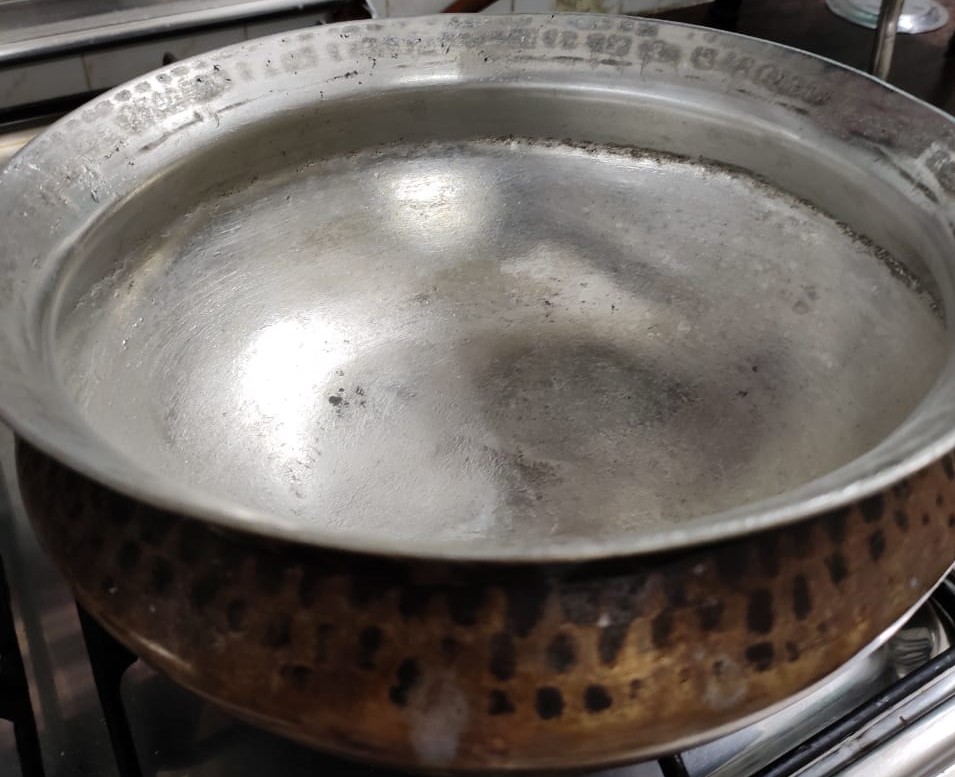
Most Sindhi food was slow-cooked on sigri (pic 2) with subzis prepared in brass utensils called supdis (pic 1), instead of pressure cookers. I have written this recipe suggesting the use of pressure cooker, but many Sindhi households still use supdis for cooking their everyday meals. Needless to say, any food slow-cooked on a sigri in a supdi is bound to be heavenly.
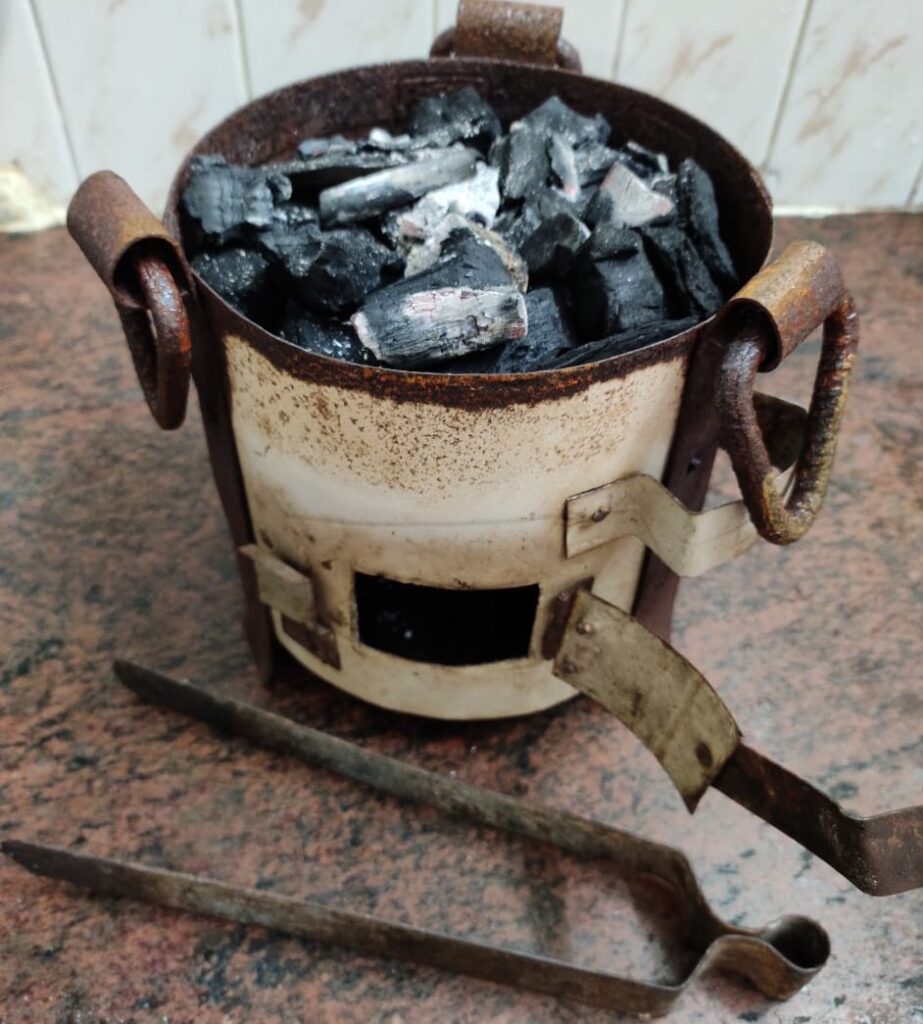
PIC 1: Supdi
PIC 2: Sigri
PIC CREDIT: Mrs. Urvashi Dama
SURAN JO KUTIYAL (serves 3-4)
Ingredients
250 gm suran (peeled, washed and finely chopped)
3 medium sized onions (chopped)
100 gm (a handful) fresh fenugreek leaves (washed and chopped)
2-3 chillies (chopped)
a small piece of ginger (ground)
2 tsp coarsely ground pomegranate seeds
1 tsp caraway seeds
1 tbsp coriander powder
1/2 tbsp cumin powder
1 tsp gram masala powder
1 tsp red chilli powder
1 tsp amchur powder
salt to taste
oil
Method
- Prepare suran, onions, fenugreek leaves, chillies and ginger as mentioned above.
- Pour some oil in a pressure cooker. Add the chopped onions and caramalise them till dark brown, not black.
- Add chopped chilies and ginger. Stir for a moment and coarsely grind the mixture with a hand blender. You can add a bit of water.
- Set the vessel on the gas stove once again and add coriander powder, cumin powder, chilli powder, garam masala and salt. Saute for a while.
- Add chopped suran and fenugreek leaves. Stir well and add enough water to cover the subzi.
- Cover the cooker with the lid and cook for two whistles. Lower the flame and let the mixture cook for five more minutes.
- Once the steam escapes, garnish the subzi with amchur powder, coarsely ground pomegranate seeds and caraway seeds.
- The texture of this subzi is semi- solid and can be served hot with fulka.
NOTE: THE ORIGINAL COLOUR OF THE ONIONS IS DEEPER THAN THE ONE IN THE PIC
Recipe Credit : Mrs. Urvashi Dama, Mumbai
Jyoti Mulchandani
Ahmedabad

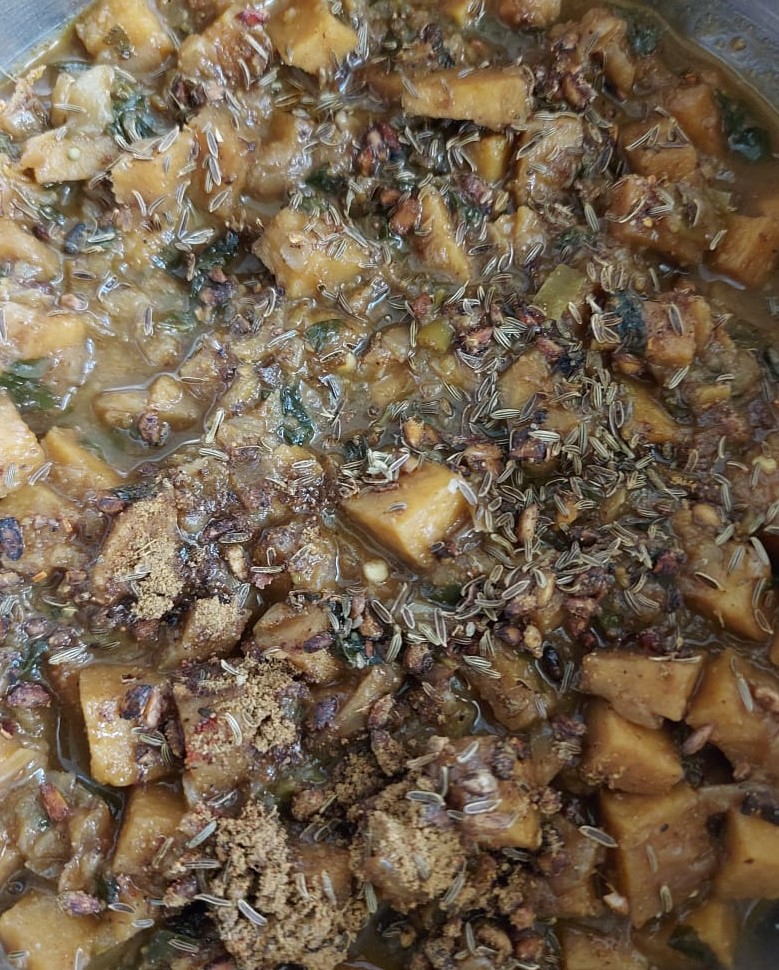
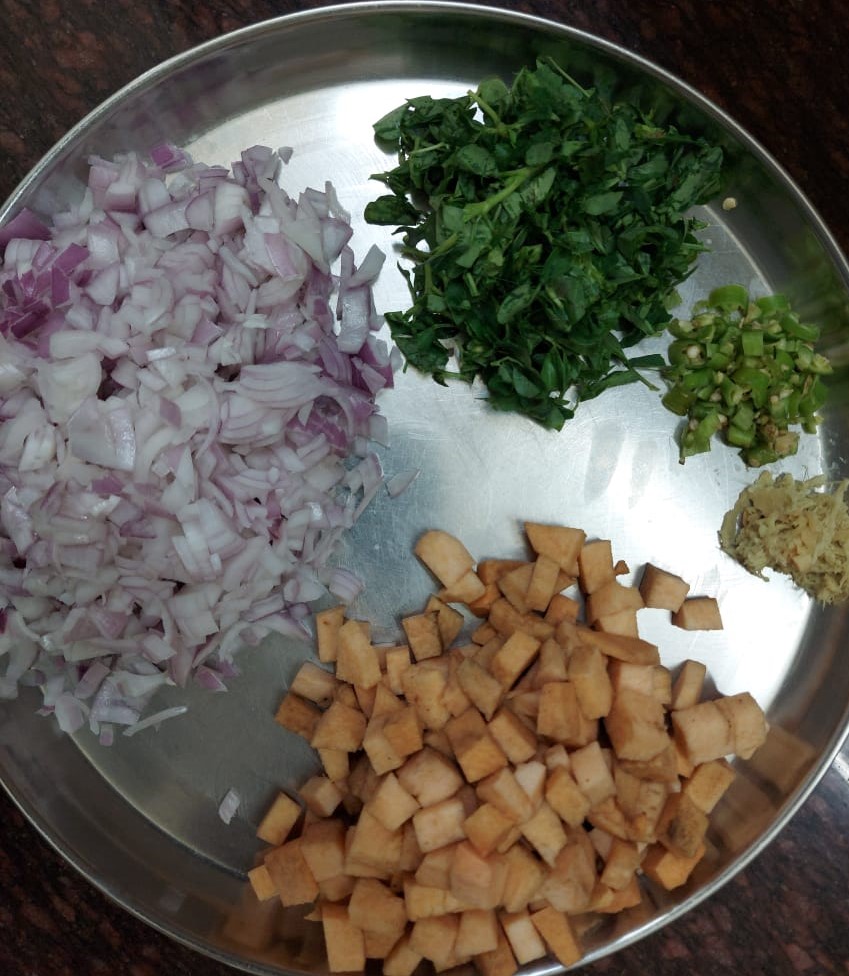
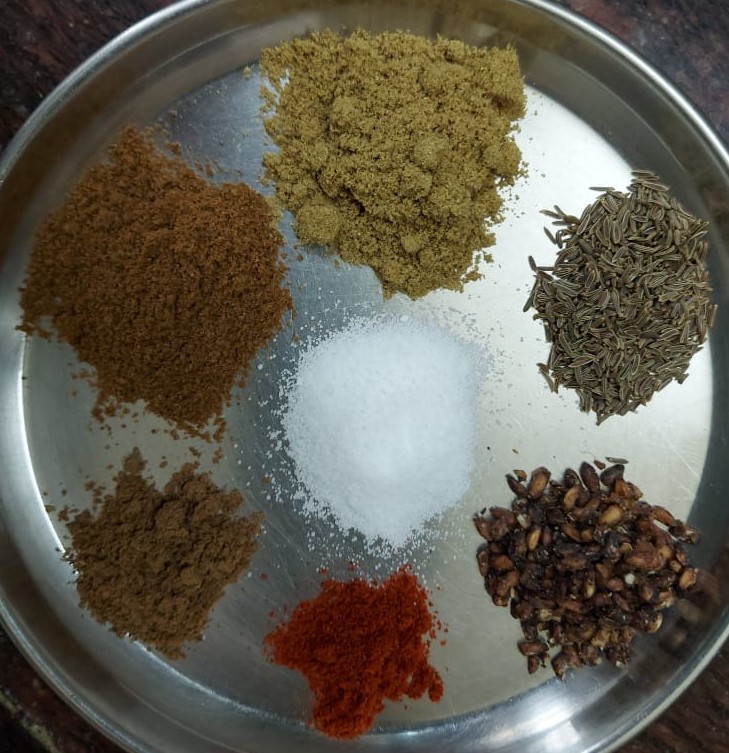
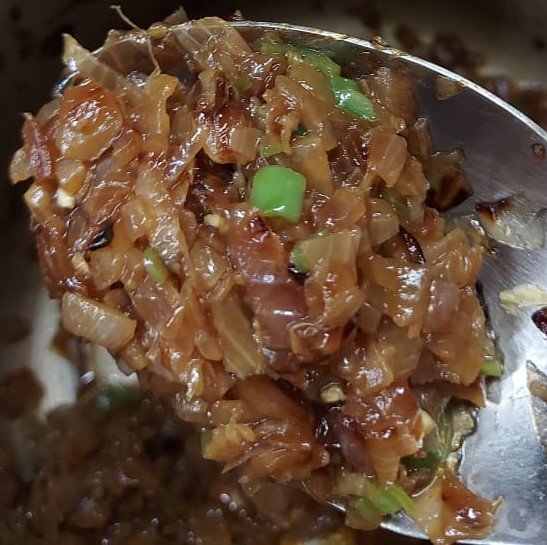
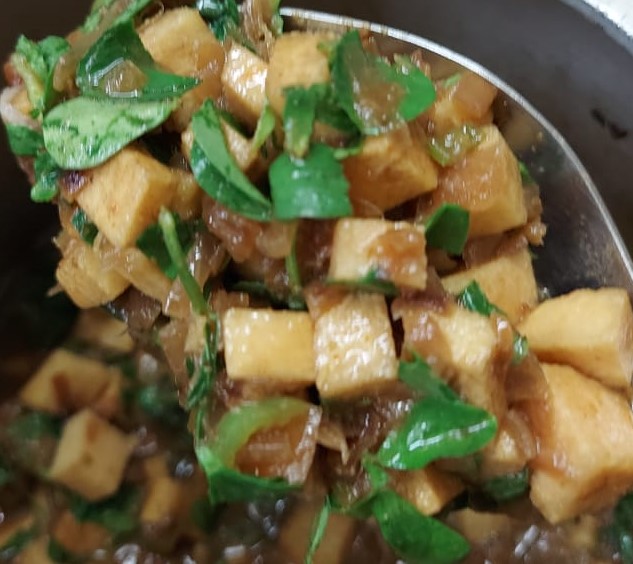
Give a Reply